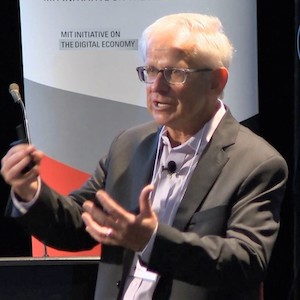Jody Ranck
See the following -
The Missing Ingredient in Today's Patient Portals: Network Effects (Part 4)
 As described in the first three posts in this series, today’s patient portals are inherently flawed and doomed to mediocrity. The result is that today’s patient portals cannot achieve a critical mass of adoption and utilization, and therefore portals can’t achieve network effects. In this post, we will: Summarize key points from the first three posts in this series; Explain how today’s patient portals miss out on three types of network effects; Explain the implications: why tomorrow’s portals must be reconfigured to achieve network effects
As described in the first three posts in this series, today’s patient portals are inherently flawed and doomed to mediocrity. The result is that today’s patient portals cannot achieve a critical mass of adoption and utilization, and therefore portals can’t achieve network effects. In this post, we will: Summarize key points from the first three posts in this series; Explain how today’s patient portals miss out on three types of network effects; Explain the implications: why tomorrow’s portals must be reconfigured to achieve network effects
- Login to post comments
The New Rules of Healthcare Platforms (Part 4): APIs Enable the Platforming of Healthcare
 Recent regulations have mandated the use of HL7 FHIR APIs (application programming interfaces) to share health data. The regs apply to healthcare providers, payers, and technology developers who participate in federal programs. Many incumbent healthcare organizations are viewing these mandates as a compliance burden. That’s short-sighted. We recommend a more opportunistic POV. APIs facilitate the sharing of health data across different devices and platforms. By adopting APIs, healthcare organizations can transform themselves from traditional service providers into powerful platforms that can connect patients, providers, and other stakeholders in new and innovative ways.
Recent regulations have mandated the use of HL7 FHIR APIs (application programming interfaces) to share health data. The regs apply to healthcare providers, payers, and technology developers who participate in federal programs. Many incumbent healthcare organizations are viewing these mandates as a compliance burden. That’s short-sighted. We recommend a more opportunistic POV. APIs facilitate the sharing of health data across different devices and platforms. By adopting APIs, healthcare organizations can transform themselves from traditional service providers into powerful platforms that can connect patients, providers, and other stakeholders in new and innovative ways.
- Login to post comments
Today's Patient Portals CAN NOT Work: Friction ACROSS Portals (Part 3)

Friction across multiple patient portals dramatically limits their usefulness—there’s no practical way for patients OR providers to reconcile and integrate information and workflow. This is the third post in our series on patient portals. We’ve used platform terminology and concepts to explain why today’s patient portals are doomed to mediocrity. Let’s recap: The first post in this series introduced the platform terminology of single-homing vs.multihoming. Patients strongly would prefer to have as few portals as possible — ideally one, i.e., a single “home”. The second post described the difference between stand-alone value and network value. Today’s patient portals can provide some stand-alone value, but they provide minimal network value. In this post we’ll discuss the pitfalls of friction across multiple portals. Your mom having seven portals is more than just inconvenient—it’s dangerous.
- Login to post comments